NATO has confirmed the launch of a new mission, Eastern Sentry, designed to reinforce its eastern flank after a wave of Russian drone incursions.
The operation, coordinated by Allied Command Operations (ACO) from Supreme Headquarters Allied Powers Europe in Mons, Belgium, will begin in the coming days and run for an undisclosed period. NATO officials say it will bring together air, land, sea and cyber capabilities in response to what they call a growing pattern of reckless behaviour by Moscow.
General Alexus G. Grynkewich, NATO’s Supreme Allied Commander Europe, said the Alliance was moving quickly. “The violation of Poland’s airspace earlier this week is not an isolated incident and impacts more than just Poland,” he said. “While a full assessment of the incident is ongoing, NATO is not waiting, we are acting.”
Today, the Romanian Air Force intercepted a Russian drone violating our national airspace.
Two F-16s from the 86th Air Base scrambled and tracked it until it disappeared near Chilia Veche. The population was never in danger.
Romania condemns Russia’s reckless behavior, which…
— Ionut Mosteanu (@IonutMosteanu) September 13, 2025
Member states have already pledged forces. Denmark will send two F-16s and an anti-air warfare frigate, France three Rafale fighters, and Germany four Eurofighters. The UK has also signalled it is preparing contributions. These deployments will reinforce existing NATO forces already stationed across the eastern flank.
The mission also includes an innovation strand. NATO’s Allied Command Transformation will feed in emerging capabilities, particularly counter-drone technologies. These range from new sensors to weapons systems designed to detect, track and destroy unmanned aircraft, a clear response to the type of threats seen in Poland.
Eastern Sentry was announced after Poland requested Article 4 consultations at the North Atlantic Council, where allies expressed solidarity and condemned Russia’s actions.


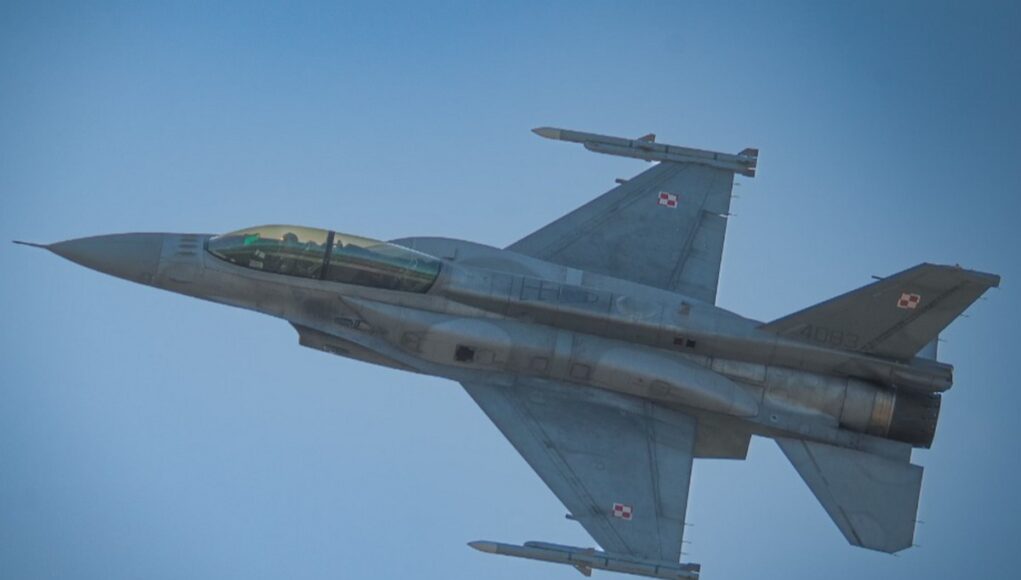
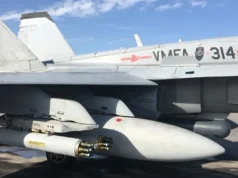

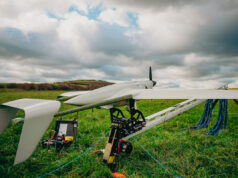
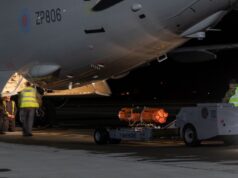
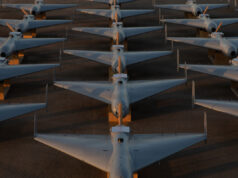

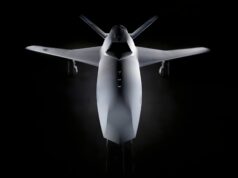




They are testing the limits of our response, more than ever, we need to shoot down manned aircraft intruding into our NATO airspace, board their grey fleet and sink anything damaging underseas communications. It is all the Russians understand.
Agree DB. There is a line. The Russians know where the line is and choose to cross it. NATOs response should be effective, timely, precise and backed by overwhelming military might. So shoot down the drones before they even cross into NATO airspace. If they close to within 5 miles they are legitimate targets.
Ditto missiles.
Board illegal shipping activity, arrest the crews and confiscate and impound the vessels. Any vessel with cable cutting equipment- sink it.
Russia needs to know we are not tolerating their idiotic attempts at intimidation.
They can’t even defeat Ukraine how the hell they think the whole of Europe should be worried about them beats me. European NATO has finally woken up and is undergoing a rearmament programme that is already yielding results.
I think the maths is a little different to that.
Effector cost
Effector generality
Range
Unit operational costs etc
The idea of having a row of overlapping units with 30mm along a border is hard to stack up economically.
Whilst the up front cost of 40mm is a tiny bit higher the increased range is a thing as it reduces the number of units, along a border or defensive line, which reduces running costs.
I fully agree that 57/40mm is ideal for drone defence of bases and CNI. Combined with CAMM[flavours] and hardening.
I think we should inform Russia that any drones etc crossing into NATO territory will result in strikes on their bases & support/manufacture/import facilities. Then do that when repeated. It’s the only language that will stop Russia, even if it has to get messy for some time. Trump is worse thaqn a complete waste of space. He’s actually facilitating genocide & crime by Russia & Israel, while wasting lots of western leadership time & energy. All he signs were there a decade+ ago. Totally unfit for any public office.
Is there an opposite of the Nobel Peace Prize. That would really wind Trump up. It’s so ironic that he is rapidly becoming effectively a woke baby totally powerless to achieve anything other than to threatening and occasionally throwing a few toys out of his pram here or there or encouraging others to throw real toys around and then falsely claiming he told them to stop. A complete charlatan who is even more incompetent and ineffectual than I expected, because even the parents have left him to it.
I also think an additional goal for Russia is to tie up any potential air defences NATO would send to Ukraine. They can’t be donated if the parent country suddenly feels they need them themselves.
Rutte is correct that the response to the baltic issues worked. There hasn’t been a successful attack since. We’ll have to give them benefit of the doubt for now.
All the while burning frame hours on manned jets to deal with polystyrene drones….
Am I missing something?
No you’re not missing anything. NATOs air defences are currently optimised for air to air intercepts and defeating high end threats.
GBAD needs massively improving with a plethora of systems from ECM, ECCM too short ranged cheap as chip line of sight missiles to canons and remote weapons platforms with machine guns. NATO needs to be able to defeat masses drone attack cheaply and effectively. The drone cost shouldn’t be surpassed by the munitions used to shoot it down.
That’s why the UK definitely should purchase dozens and dozens of the Foxhound SHORAD system demonstrated at DSEI. Martlett/ Star streak missiles x8, (for high performance targets or manned platforms) 30mm canon for larger drones and engagements at range and a 7.62mm chain gun for close range defence against smaller drones- the FPV variants so common close to the battlefield.
No, you are not missing anything. Low cost drones are a gift to Putin; a cheap way to inflict a lot of pain and cost on the west. Drones are the next level up in the hybrid warfare ‘game’.
What we need are cheap drones that take down drones. Plus eyewatering pledges to go after anything that Russia uses to base & perpertrate these attacks. Our years long restraint has only appeased & facilitated Russian aggression.
I would suggest a disproportionate response to this sort of thing. We’re going to need to induce pavlovian learning to the Russian regime. Let’s keep their western air defences busy for a while. Let’s see if we can run up the mileage on their existing, diminishing fleet of aircraft.
Point defence isn’t cutting it and long range SA area defence missiles are expensive. Countries need an affordable, effective defence layer against drones and sub sonic cruise missiles. Operation Chain Home and low cost interceptors; refurbished Hawks with I/R seeker APKWS and a gun pod.
Will we see the return to the low cost turbo prop interceptors for this sort of job, high speed jet fighters aren’t really the best platform for it.
I’d just read articles on the new APKWS I/R seeker and the search for a Hawk replacement and had a creative brainstorm ( they can’t lock you up for it). As you say a turboprop might be better for petrol engine drones but a Hawk could also carry a couple of ASRAAM for jet cruise missiles and a radar.
This is another situation where NATO is on the back foot, reacting to events rather than controlling them. Russian drones over Poland; oops, better set up an Eastern Sentry. We all knew Russia would test NATO’s eastern boundaries, why weren’t they ready for it? Why wasn’t this ‘innovation strand’ already in place, countering drones.
And note that while other Countries have pledged (a pathetic few) aircraft, the UK has “signalled it is preparing contributions.” Classic, Putin must be quaking.
Finger out, NATO.
He can’t achieve air superiority over Ukraine after 3 years of trying. He will be quaking at NATO capabilities.
I don’t think anyone is arguing otherwise. But we’re talking here about drones, very efficient attack weapons that fly below aircraft level, ie that negate NATO’s superiority higher up.
All that have threatened have been shot down. And tactics will quickly be learned and developed to counter drones of all types.
That Polish roofless house that was on the BBC coverage 5 days ago would suggest otherwise. Putin knows very well he can’t compete with conventional air. It will be a ‘malfunctioning’ missile next just to see what the reaction is.
I agree with you, I think those that are arguing more extreme responses (which in theory we can all support) are not risk free. You really don’t in peacetime want to be firing all manner of effectors anywhere near populated areas or you are going to be more dangerous to lives and property than the drones themselves. We need to be firm but a sensible methodology found to be effective while minimising risk. I do agree that not only should we be taking out where possible drones in border regions of Ukraine but also not just ignore any that head over NATO territory to hit Ukraine targets which I fear was the case with the Romanian drones most recently and indeed historically, it’s our duty to take action against those otherwise we become complicit in Russian strikes.
I presume the aircraft are in addition to the present aircraft based in these Countries.
If they had the political support behind them, ENATO could spare at least 50 more front line fighters to send to the eastern front. And send more troops. And put a decent permanent carrier group in the North Sea. And something in the Med.
That would make Putin notice.
Re introduce 5.56mm miniguns to deal with small slower and cheaper drones.
Putin can keep sending over cheap drones what reasonable cost response has nato got along a very long border. We have to continue to be readying for war and hope for peace.
So people will meet, talk about the ‘incursions’, get irate, send strongly worded letters, send more aircraft, flap their gums… and again, NATO will do nothing.
Time to engage anything Russian within 20 miles of the border.
Give and let the Ukrainians use the kit to destroy drone production. Several open source facilities have pinpointed the locations.
Give Belarus a warning too. We fanny about, Russia only responds to strength and resolve demonstrated by actions. Thats not escalation, its a line in the sand.
NECESSITY for an immediate NO-FLY-ZONE over UKRAINE
Irrespective of the joint press conference at NATO Headquarters, in Brussels, on Friday 12SEP2024, the necessity to implement the following suggestion is,
1. a direct consequence of Putin’s decision to violate NATO’s air-space, and
2. the very minimum now required to re-establish and confirm the effective DETERRENCE of NATO’s Allied Air Command (AIRCOM).
Consolidated within NATO’s Allied Air Command (AIRCOM), is sufficient hardware and all the competent personnel, to give politicians the confidence to impose a unilateral no-fly-zone over Ukraine . . . possibly without (the necessity for) a “shot-being-fired”.
NATO can re-assure Putin that NATO has no wish to, and no intention of, disrespecting or transgressing 1991 internationally recognised borders . . .
3. provided NATO’s assets are not attacked whilst they conduct air-patrols along those 1991 internationally recognised borders, and
4. provided no flights – of any kind – are detected heading towards Ukraine or NATO member states.
NATO’s Allied Air Command (AIRCOM), should give politicians the confidence to now put the onus of responsibility on Putin, and remind him of the “shock-and-awe” that NATO can and would employ to remove launch-sites, destroy manufacturing facilities, and eliminate logistic nodes, associated with any flights – of any kind – directed towards Ukraine or NATO member states.
The above suggestion is deliberately, singularly, focused on the air-war over Ukraine.
If not a specific agreement, it is suggested the consequences of the above on the ground-war should be sufficient to produce a tacit recognition and acknowledgment of, and the long-term “freezing” of, the present, de facto, front lines of the ground-war.
Saab’s Nimbrix missile system looks interesting as one leg of a multi faceted mobile anti drone defence.